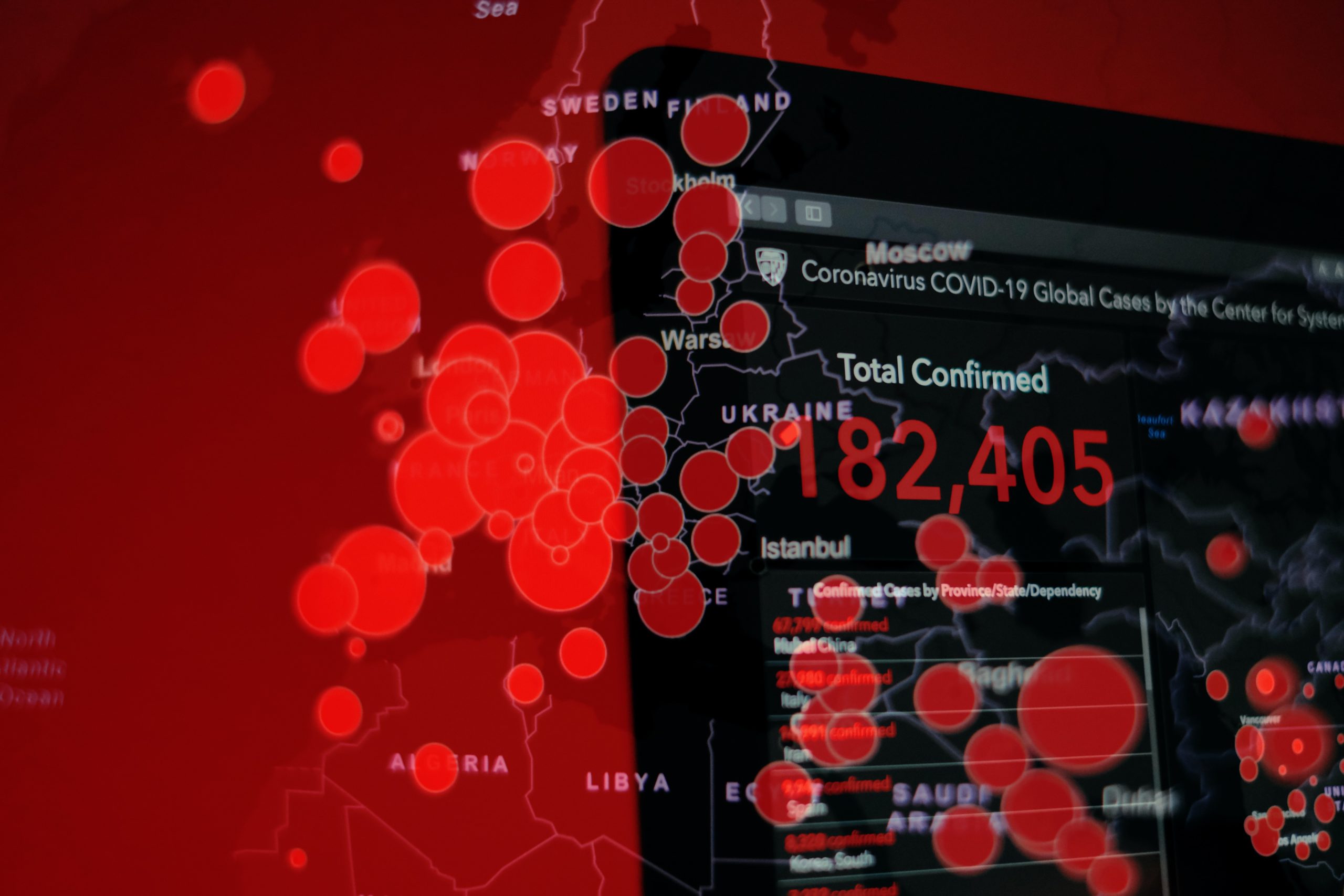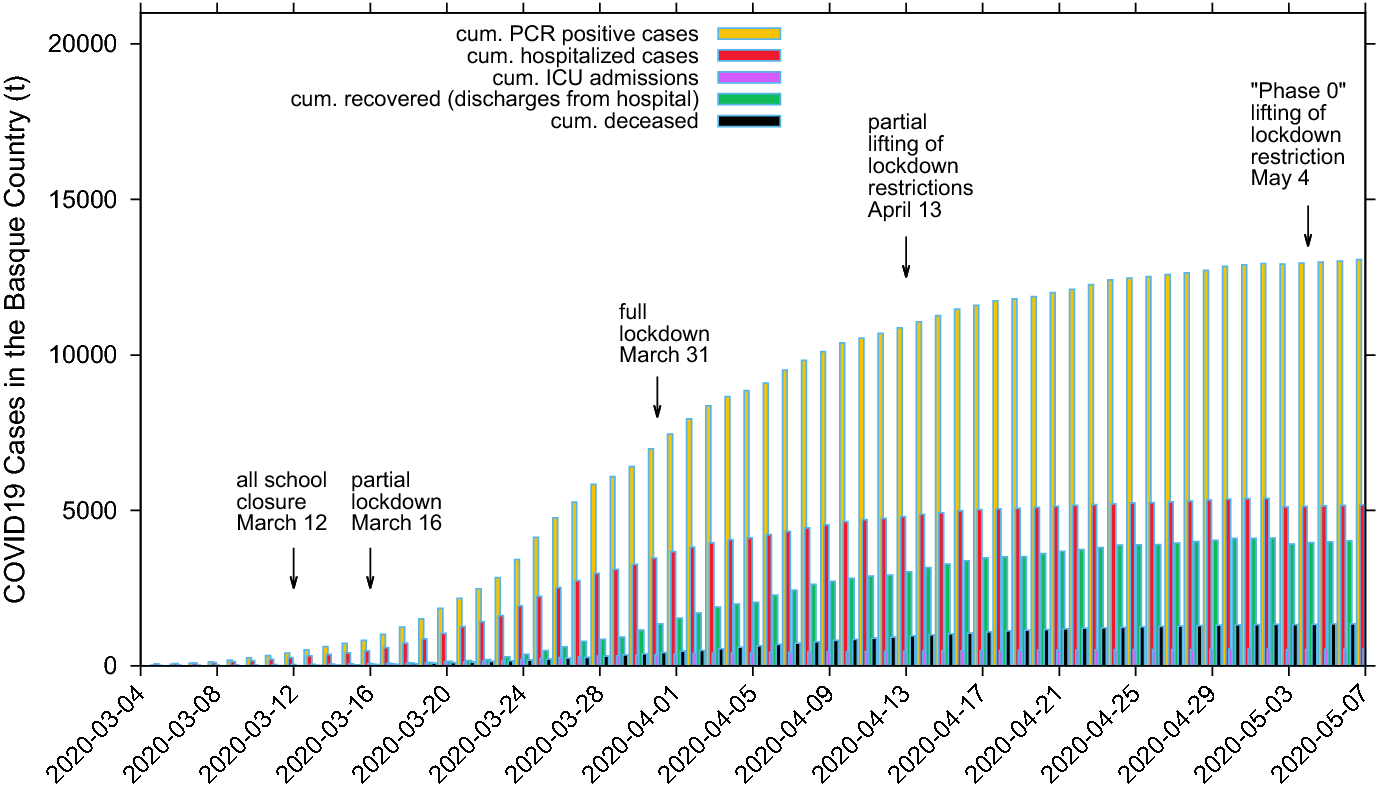Modelling the dynamics of COVID-19 first wave
In March 2020, a multidisciplinary task force (so-called Basque Modelling Task Force, BMTF) was created to assist the Basque health managers and Government during the COVID-19 responses. BMTF works creating a model based on different approaches: stochastic processes, statistical methods and artificial intelligence. The efforts and challenges to develop a flexible modelling framework able to describe the dynamics observed for the tested positive cases, including the modelling development steps, are now the subject of a new research paper. 1

How it all started
In December 2019, a new respiratory syndrome called coronavirus disease 2019 (COVID-19) caused by a new coronavirus (SARS-CoV-2)1 was identified in China and spread rapidly around the globe. With human-to-human transmission confirmed in 3 countries outside China, COVID-19 was declared a Public Health Emergency of International Concern by the World Health Organization (WHO) on 30 January 2020. By February 25, 2020, China was the epicentre of the outbreak and, in 2 weeks, on March 11, 2020, COVID-19 was characterized as a pandemic, with Europe reporting more cases and deaths than the rest of the world combined, apart from China.
Up to April 25, 2020, more than 2.8 million cases were confirmed with about 200 thousand deaths, with a global case fatality ratio (CFR) of approximate 7%. Italy, the first hardest hit country in Europe, had local transmission confirmed in all regions in the beginning of March 2020. Eleven municipalities in northern Italy were identified as the centres of the two main Italian clusters. On March 8, 2020, the Prime Minister Giuseppe Conte had placed in quarantine all of Lombardy and 14 other northern provinces. The national lockdown decree was signed on March 9, 2020, prohibiting all forms of gathering of people in public places and suspending sports events and competitions of all types. By that time, Italy, was considered the new epicentre of the outbreak, reporting more than 9 thousand confirmed cases with more than 450 deaths. On March 21, 2020, further restrictions within the nationwide lockdown were imposed, with all non-essential production, industries and businesses halted, as the number of new cases and deaths were still rising.
In respect to the total number of confirmed cases, Spain was 8 days behind Italy, with cases reported in all 50 provinces of the country on March 8, 2020. The decree of a national lockdown was signed on March 14, 2020, with all non-essential workers staying at home from March 27, 2020, onwards. In the Basque Country, an autonomous community in northern Spain with 2.2 million inhabitants, the first cases of COVID-19 were notified on March 4, 2020. A public health emergency was declared before any other region in Spain. All schools in the Basque Country were closed by March 12, 2020, and, ruled by the same Spanish decrees, lockdown measures were implemented accordingly and in time.

Modelling the dynamics of COVID-19 first wave
As the COVID-19 pandemic is unfolding, research on mathematical modelling becomes more important than ever to understand disease spreading dynamics and the impact of intervention measures. By incorporating the new information generated by virology, field epidemiology and social behaviour, for example, mathematical models are often used to guide public health authorities with projections for the national health system’s necessities during an outbreak. Those mathematical models also provide insights about the disease spreading over time, assessing the impact of human interventions for disease control, and Governments in some countries have already taking important decisions based on these results.
But modelling the dynamics of COVID-19 is very challenging, as we know very little about disease transmission. More complex models would be able to give more accurate projections about specific variables such as number of hospitalizations, intensive care units admissions (ICUs) and deaths, for example, over the course of the epidemics. However, to build useful models, good quality empirical data and its understanding, as well as a close collaboration among mathematical modelers, field and laboratory researchers as well as public health stakeholders are essential.
In March 2020, a multidisciplinary task force (so-called Basque Modelling Task Force, BMTF) was created to assist the Basque Health managers and the Basque Government during the COVID-19 responses. Members were collaborating taking into consideration all information provided by the public health frontline and using different available datasets in respect to the COVID-19 outbreak in the Basque Country. All modelling approaches were complementary and were able to provide coherent results, assuring that the decisions made using the modelling results were sound and, in fact, adjusted to the current epidemiological data. In addition, modelling results provided useful predictive information to validate outbreak control decisions and finally, to assist authorities in the Basque Country.
BMTF used stochastic SHARUCD-type models (susceptible (S), severe cases prone to hospitalization (H), mild, sub-clinical or asymptomatic (A), recovered (R), patients admitted to the intensive care units (U) and the recorded cumulative positive cases (C) which includes all new positive cases for each class of H, A, U, R, and deceased (D))—an extension of the well known simple SIR model that is frequently used to model different disease outbreaks. The deterministic approach was obtained via the mean field approximation of the stochastic system and was also used to evaluate the model performance and accuracy to guide the modelling analysis. The model was calibrated using the empirical data for the Basque Country community and the biological parameters were either estimated or fixed as the model was able to describe the disease incidence data.
The longer-term predictions of the development of the first wave of the pandemic in the Basque Country turned out to be correct, with the notified cases well within the 95% confidence intervals for the studied epidemiological scenario.
Author: César Tomé López is a science writer and the editor of Mapping Ignorance
Disclaimer: Parts of this article might have been copied verbatim or almost verbatim from the referenced research paper.
References
- Aguiar, M., Ortuondo, E.M., Bidaurrazaga Van-Dierdonck, J., Mar, J. & Stollenwerk, N. (2020) Modelling COVID 19 in the Basque Country from introduction to control measure response. Sci Rep 10, 17306. doi: 10.1038/s41598-020-74386-1 ↩